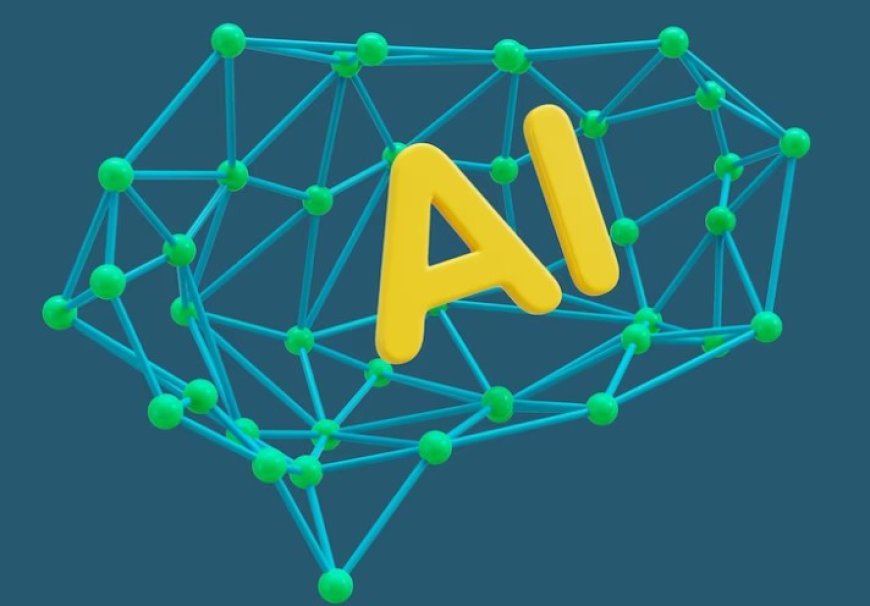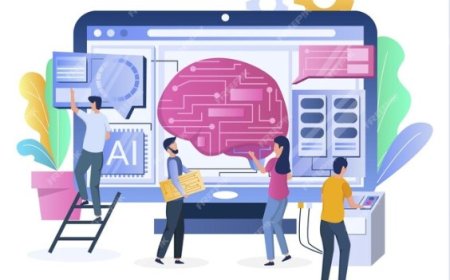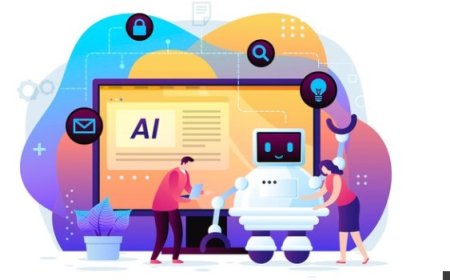The Elements of Artificial Intelligence: Facing the AI Environment
Explore the essential Elements of Artificial Intelligence and navigate the evolving AI environment. Uncover insights into cutting-edge technologies.

Artificial Intelligence (AI) is all about creating computer systems that can perform tasks similar to humans. This includes problem-solving, learning, recognizing speech, and making decisions. To understand AI better, let's break it down into its main components.Machine Learning is like the powerhouse of AI. It involves teaching computers to learn and improve on their own. By exposing them to a lot of data, these systems can identify patterns, make predictions, and enhance their performance over time. This adaptive learning is what drives many AI applications.Neural Networks are like smart machines that try to imitate how our brains work. They are inspired by the human brain and consist of interconnected dots. These networks help machines understand complex patterns and make decisions. It's important to know how these networks work to understand how AI can copy how humans think.
Facing Challenges in AI Development
AI developments bring about ethical issues that need to be carefully addressed. Including AI into our daily lives raises issues of fairness, privacy, and accountability, which require us to closely examine the Challenges within this technology.
-
Bias in AI Systems: One big problem is that AI can pick up biases from the data it's trained on. If the data is biased, the AI might make unfair decisions. Fixing this is super important to make sure AI treats everyone fairly.
-
Explainability and Transparency: Sometimes, AI works like a mysterious black box. It makes decisions, but we're not always sure how. This lack of transparency is a problem, especially in important areas like healthcare and finance. We need AI to be more open about how it reaches its conclusions.
-
Ethical Considerations: As AI becomes a bigger part of our lives, we run into some tricky ethical questions. Things like privacy concerns, people losing jobs, and the chance of AI being misused are big worries. Figuring out how to use AI responsibly is a key challenge for developers and society.
What are Addressing the Key Inquiries Surrounding AI?
To address concerns related to AI transparency, the industry is focusing on developing Explainable AI (XAI). This approach aims to make AI systems more understandable, enabling users to interpret and trust their decisions.
Transparency in AI:
-
AI is like a magic box with secret tricks that we can't understand. This can be worrying because we don't know how it works.
-
We can't hold AI accountable for its actions because we don't know how it makes decisions. It's like playing a game with someone who makes up rules but doesn't tell you.
-
To trust AI, we need to uncover its secrets and know how it makes decisions. This is like asking a magician to reveal their tricks.
-
Understanding how AI works helps us control its impact on our lives, like driving a car. We want to be in the driver's seat, not just along for the ride.
-
We need to find ways to make AI less secretive, like creating rules or guides. This makes it fair and trustworthy for everyone.
Teaming Up for a Brighter AI Future
-
AI is a team effort involving ethicists, policymakers, and regular people like us. We all bring something valuable to the table.
-
We need to find a balance in AI, making sure it follows fair rules while still being cool and innovative.
-
Think of AI like a busy road, and we all need traffic rules to keep things running smoothly and safely.
-
Ethical researchers help us determine what's right and wrong for AI, so we can ensure it respects our values.
-
Working together, we create fair rules and guide AI's development, making it a helpful tool that respects our values and adds creative thinking to our lives.
Developing Responsible AI: Mapping the Way Forward
To use AI responsibly, we need to understand what it is and how it can affect us. We can't do it alone, so we need to work together and create rules. It's like steering a ship - we need a map, a vision, and a crew working together to guide AI in the right direction.
Key Components of AI
-
Machine learning: Machine learning is an AI application that automatically learns and improves from previous sets of experiences without the requirement for explicit programming.
-
Deep learning: Deep learning is a subset of ML that learns by processing data with the help of artificial neural networks.
-
Neural network: Neural networks are computer systems that are loosely modeled on neural connections in the human brain and enable deep learning.
-
Cognitive computing: Cognitive computing aims to recreate the human thought process in a computer model. It seeks to imitate and improve the interaction between humans and machines by understanding human language and the meaning of images.
-
Natural language processing (NLP): NLP is a tool that allows computers to comprehend, recognize, interpret, and produce human language and speech.
-
Computer vision: Computer vision employs deep learning and pattern identification to interpret image content (graphs, tables, PDF pictures, and videos).
Education and Awareness in AI's Empowerment for Everyone
-
Simplifying the Basics: Start by introducing the fundamental concepts of AI in a way that even beginners can Understand.Simplify the technical terms and explain that AI is like a smart assistant that learns and assists us with different tasks.
-
The Learning Process: Demonstrate how AI learns from data, just like we do. Explain that it improves over time by analyzing information, much like a student who improves through practice. This helps to demystify the process and make it more relatable.
-
The Pros and Cons: Discuss the possible benefits and challenges of AI. Highlight the advantages, such as efficiency and problem-solving, but also mention the risks, such as biases and privacy concerns. This balanced view enables stakeholders to make informed decisions.
-
Real-Life Examples: Shared real life examples of how AI is already being used, making it more tangible. From voice assistants to recommendation algorithms, connect AI to everyday experiences, making it less abstract and more practical for everyone.
-
The Role of Developers: Explain the responsibility of developers in creating AI. Highlight that they play an important role in shaping how AI behaves and providing it aligns with ethical standards. This awareness helps developers understand the impact of their work.
-
User Empowerment: Educate end-users about how they can control and interact with AI. Teach them about privacy settings, data control, and the importance of actively participating in decisions related to AI use. This empowers individuals to be mindful consumers of AI technology.
-
Interactive Workshops and Demos: Conduct hands-on workshops and demonstrations, allowing stakeholders to experience AI in action. This can be as simple as interacting with a chatbot or understanding how a recommendation system works. Hands-on experience improves understanding.
-
Ethical Considerations: Talk about the moral aspects of AI development and usage. Explain to stakeholders why fairness, accountability, and transparency are important. Encourage a sense of responsibility in using AI for the betterment of society.
-
Continuous Learning: Highlight that AI is always changing and that continuous learning is necessary. Encourage stakeholders to stay updated on new advancements, applications, and ethical standards. This ongoing education suggests that everyone actively contributes to shaping the future of AI.
Improving AI: Making it Better Every Step of the Way
Artificial Intelligence (AI) is like a smart computer, but it's not perfect. We need to keep working on it to fix bugs and add new features. We can make AI better and smarter over time by continuously evaluating and improving it. This is like having a coach for AI, helping it get better every day. We use iterative development to take small steps, learn from them, and make even better steps. AI listens to feedback, learns from it, and becomes a smarter digital buddy. We also address shortcomings by being open about what's not quite right and figuring out how to make it better.
In understanding artificial intelligence, we discover a constantly changing field influenced by data, algorithms, and computing capabilities. To navigate the complexities, we must tackle bias, enhance transparency, and embrace ethical concerns. The important inquiries about AI lead us towards responsible growth and implementation, with diversity, ongoing learning, and community involvement as our guiding principles for a future where AI enhances human abilities.






























































